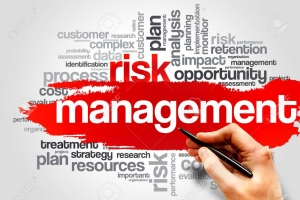No Safe Harbor in the “Contract Assurances” Required in the EU Directive Proposal
The European Commission published the long-awaited Proposal for a Directive of the European Parliament and of the Council on Corporate Sustainability Due Diligence (the “EU Directive”) on February 23, 2022. It has been suggested that text found in the EU Directive “risks making the law ineffective” by implying that companies can fulfil their obligations by simply adding clauses in their contracts with suppliers and verifying compliance with “suitable industry initiatives or independent third-party verification”. The criticism is that the “contractual assurances” and verification required by Items 2(b) and 4 of Article 7, and Items 3(c) and 5 of Article 8 allow companies to shift their responsibilities on to their suppliers and to knowingly get away with harm by conducting ineffective audits or participating in voluntary industry schemes that have failed in the past.
The argument that companies can find an easy safe harbor within the EU Directive is misguided. Such condemnation places undue emphasis on the first two elements to achieve the negation of civil liability under Article 22 and ignores the third factor. A company must prove not only that (i) it used appropriate contract clauses (under to-be-provided Commission guidance), and (ii) it verified compliance, but must also prove (iii) it was reasonable to expect the action taken, including the verification process, “would be adequate to prevent, mitigate, bring to an end or minimize the extent of the adverse impact.” The last element is unfairly discounted by those that fear delivery of a safe harbor to industry influences. In addition, due account is not given to Article 22’s additional text that insists company efforts (or absence of efforts) to remediate any discovered damage and the extent of pre-harm support and collaboration to address adverse impacts in its value chains (or absence of support and collaboration) is also to be considered in determining liability.
Articles 4 to 11, 25 and 26 of the EU Directive impose due diligence obligations on subject companies and address the duty of care required of their directors in setting up and overseeing due diligence. The EU Directive has numerous “Whereas” clauses expressing a desire to incorporate the UNGPs and OECD Guidelines which require shared responsibility between buyers and suppliers. It should not be read as suggesting companies avoid liability by simply demanding conventional representations and warranties from a first-tier supplier without shared responsibility for thorough retrospective and prospective investigations to identify, prevent and end adverse impact. Any company that believes “contract assurances” without a detailed and regularly reviewed corporate strategy to address human rights, climate change and environmental consequences using contracts as one of multiple tools is destined to be found liable for damages.
Perhaps Article 22 with respect to a company’s potential civil liability could be clearer with respect to this point if it included a reference to Articles 4,5 and 6 in lieu of the existing limited reference to the obligations laid down in Articles 7(Preventing potential adverse impacts) and Article 8 (Bringing actual adverse impacts to an end). But Article 12 (Model contract clauses) of the EU Directive includes a promise that the Commission will provide guidance for model contract clauses and Article 13 (Guidelines) states the Commission, in consultation with Member states, stakeholders, the European Union Agency for Fundamental Rights, the European Environment Agency, and appropriate international bodies may issue guidelines for specific sectors or specific adverse impacts. The to-be-developed model contract clauses should reflect the characteristics and obligations found in Version 2 of the Model Contract Clauses (the “MCCs”) drafted by the American Bar Association Business Law Section’s Working Group found here Center for Human Rights. The MCCs include provisions which require:
● a joint responsibility by buyer and seller to engage in human rights due diligence, in line with the UNGPs and the OECD Guidance;
● a commitment by buyer to engage in responsible purchasing practices that will support supplier’s obligations to avoid adverse human rights impacts; and
● in the event of an adverse impact, a joint commitment that: (a) the parties will prioritize victim-centered human rights remediation above conventional contract remedies (that compensate the non-breaching party, not victims); and (b) each party’s participation in remediation shall be proportionate to each party’s causation of or contribution to the adverse impact.
The EU Directive and the right contract clauses and due diligence guidance can change the way supply chains in global markets have worked for centuries. Finally, a real tool to address modern slavery and the environmental destruction of entire communities.
Attention Importers and Retailers: Move Quickly to Remove Turkmen Cotton from Your Supply Chains
Retailers, Importers, and brands need to immediately be sure there is no cotton from Turkmenistan in their supply chains. The U.S. Customs and Border Protection (CBP) has finally announced it will turn away or seize and withhold any shipments of cotton originating in the Central Asian nation of Turkmenistan. Affected importers will clearly experience a significant, and probably costly, disruption of production- related procurement. The International Labor Rights Forum (ILRF) urged the U.S. to ban Turkmen cotton two years ago but was rejected until findings of state-enforced slave labor was documented after extensive investigation.
CBP was given the authority to ban tainted products like cotton from Turkmenistan when The Trade Facilitation and Trade Enforcement Act of 2015 (TFTEA) removed the “consumptive demand” exception to the United States Tariff Act of 1930, a commonly exploited loophole to the prohibition against importing products of forced labor. Prior to the new provision, CBP used the law only 39 times since 1930 to apprehend goods tainted at some point from creation to delivery by forced labor. Since the passage of TFTEA, CBP has issued four new Withhold Release Orders (each a WRO) on specific goods from China (soda ash, calcium chloride, and caustic soda from Tangshan Sanyou Group and its subsidiaries on March 29, 2016; potassium, potassium hydroxide, and potassium nitrate from Tangshan Sunfar Silicon Industries also on March 29, 2016; Stevia and its derivatives from Inner Mongolia Hengzheng Group Baoanzhao Agricultural and Trade LLC on May 20, 2016; and peeled garlic from Hangchange Fruits & Vegetable Products Co., Ltd. on September 16, 2016).
A March 31, 2017 Executive Order establishing enhanced collection and enforcement of antidumping and countervailing duties and violations of trade and customs laws authorized the Secretary of Homeland Security, through the commissioner of CBP, to develop implementation plans and a strategy for interdiction and disposal of inadmissible goods and to develop prosecution practices to treat significant trade law violations as a high priority.
Although 2017 saw more antidumping and countervailing duty orders and intellectual property rights protection activity under TFTEA, there have been no published detentions prior to the ban of any shipments of Turkmen cotton, although CBP pledged to the U.S. Congress that more import bans under section 307 would be forthcoming. Perhaps this is just the beginning of a long awaited CBP crack-down on forced labor imports to combat human rights abuses in global supply chains.
Tattletale: Supply-Chain Investigations and the Attorney-Client Privilege
Goods Tainted by Forced Labor
Reprinted with permission from Business Law Today April 2018.
The global fight against child labor and forced labor has been led for decades by the International Labor Organization (ILO). The ILO’s most recent estimate is that 25 million people around the world, including millions of children, are currently subjected to forced labor. Under U.S. law, section 307 of the Tariff Act of 1930 prohibits the importation of merchandise mined, produced, or manufactured, wholly or in part, in any foreign country by convict, forced, or indentured labor. This law gave the U.S. Customs Service (now the U.S. Customs and Border Protection (CBP)) authority to seize commodities imported into the United States where forced labor was suspected to have been used anywhere in the supply chain.
The Tariff Act defines “forced labor” as “all work or service which is exacted from any person under the menace of any penalty for its nonperformance and for which the worker does not offer himself voluntarily.” Products of forced labor include goods that were produced by convicts and indentured laborers. The ILO defines forced or compulsory labor as service that involves coercion—either direct threats of violence or more subtle forms of compulsion under the menace of any penalty. Goods made by child labor, defined as work that deprives children of their childhood, their potential, and their dignity and that is harmful to their physical and mental development, are included in the forced-labor prohibition especially when combined with any form of indenture. Such tainted merchandise is subject to exclusion and/or seizure by the CBP, may lead to corporate criminal liability, and could even support prosecution of culpable employees individually.
The Trade Facilitation and Trade Enforcement Act of 2015 (TFTEA) removed the “consumptive demand” exception to the United States Tariff Act of 1930, which was a commonly exploited loophole to the prohibition against importing products of forced labor. Prior to the new provision, CBP used the law only 39 times since 1930 to apprehend goods tainted at some point from creation to delivery by forced labor. Since the passage of TFTEA, CBP has issued four new Withhold Release Orders (each a WRO) on specific goods from China. Although 2017 saw more antidumping and countervailing duty orders and intellectual property rights protection activity under TFTEA, there have been no published detentions to date, although CBP has pledged to the U.S. Congress that more import bans under section 307 are forthcoming.
Anti-forced Labor Initiatives and Benchmarking a Supply Chain Compliance Program
Or
Avoiding Bad Press, Brand Impairment and Costly Litigation
Reprinted with permission from the February 28th edition of the The Legal Intelligencer © 2017 ALM Media Properties, LLC. All rights reserved.Further duplication without permission is prohibited
A significant amount of press surrounded the US Department of Justice (DOJ) one year trial pilot program on April 5, 2016 and the earlier September 29, 2015 “Yates Memo”, instructing companies to self-disclose possible violations of the Foreign Corrupt Practices Act (FCPA) and fully cooperate with the DOJ. What has not been as broadly made known is that, a few days later, the U.S. Customs and Border Protection (CBP) establish a Trade Enforcement Task Force within its Office of Trade to focus on issues related to enforcement of antidumping and countervailing duty laws and interdiction of imported products using forced labor.
Antidumping and countervailing duties are historic tariffs imposed on foreign imports priced below fair market value to ensure a level playing field for domestic producers. The interdiction of products using forced labor stems from The Trade Facilitation and Trade Enforcement Act of 2015(TFTEA), enacted in February 2016. TFTEA eliminates an earlier “consumptive demand” exemption, meaning that goods made with indentured, child, or other forced labor are no longer allowed in the US just to meet US demand. With this change, CBP will no longer be legally required to weigh demand considerations when processing information concerning forced labor. CBP will be updating its regulations to clarify the TFTEA amendment but, since March 10, 2016, CBP started training personnel and has executed several withhold/release orders related to goods made by convict or forced labor using a Department of Labor (DOL) list of foreign-made products for which the DOL “has a reasonable basis to believe might have been mined, produced or manufactured” by forced or indentured labor. The CBP has also established within its Office of Trade a Trade Remedy Law Enforcement Division and seems intent on taking action.























